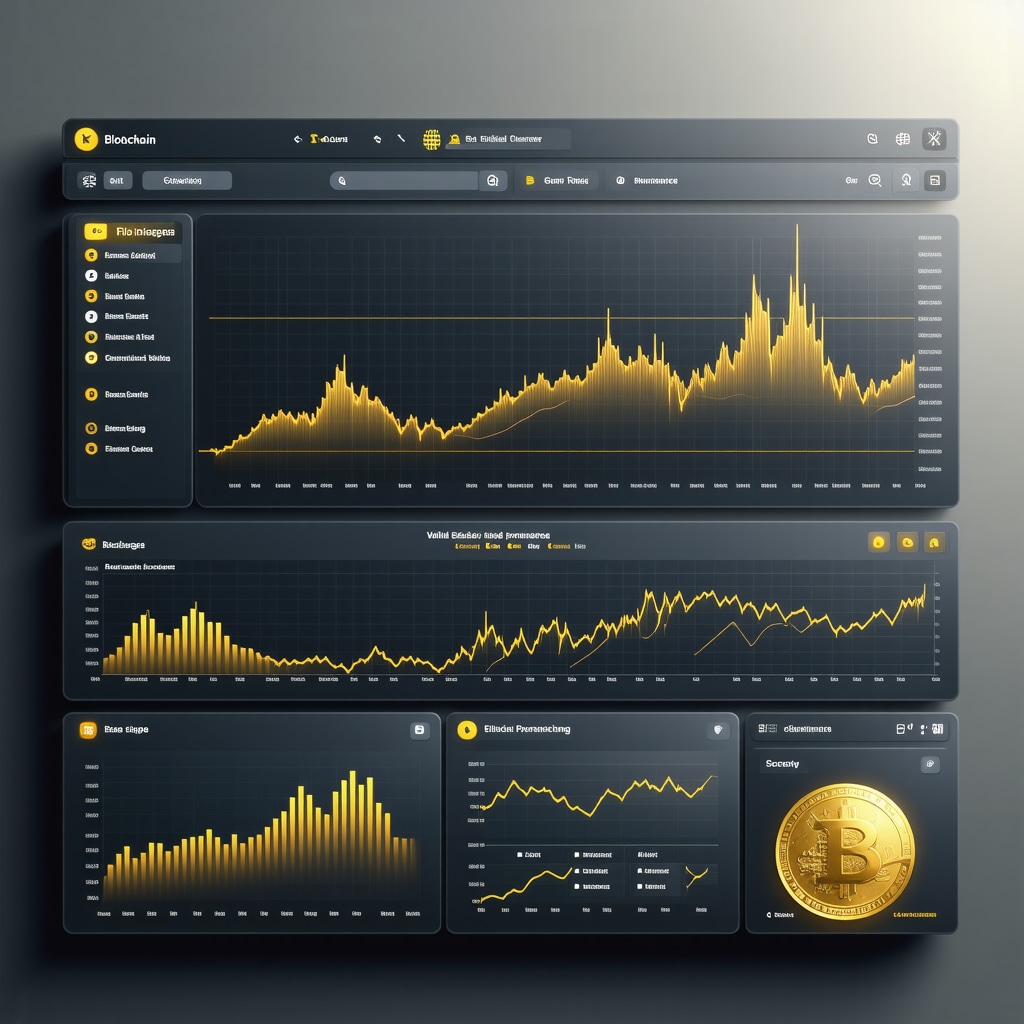Unlocking the Timeless Value: Why Physical Gold Remains a Premier Investment
In an era dominated by digital assets and volatile markets, physical gold continues to captivate investors as a resilient store of value. Unlike paper investments, owning tangible gold offers a unique sense of security, especially during economic uncertainty. However, navigating the intricacies of buying physical gold requires more than just enthusiasm—it demands an informed approach grounded in best practices for safe investment.
The Art and Science of Selecting Authentic Gold: Navigating Quality and Purity
Understanding the nuances behind gold purity and certification is paramount. Investors must prioritize buying gold with recognized hallmarks, such as the 24-karat standard or reputable assay markings, to avoid counterfeit risks. Engaging with trusted dealers and verifying authenticity through certificates or third-party assays ensures your investment holds intrinsic value. This attention to detail is a cornerstone for safeguarding wealth in physical gold.
Secure Storage Strategies: Protecting Your Golden Assets Against Theft and Devaluation
Physical gold’s value is only as good as its security. While home safes offer convenience, they may not provide adequate protection against theft or natural disasters. Many seasoned investors opt for bank safety deposit boxes or professional vaulting services with robust insurance coverage. Additionally, understanding storage costs and accessibility is crucial to maintaining liquidity without compromising safety.
How Can Investors Balance Liquidity With Security When Buying Physical Gold?
Striking a balance between ease of access and secure storage often challenges physical gold investors. Holding smaller quantities in insured home safes can provide immediate liquidity for emergencies, while larger holdings stored in professional vaults reduce risks. Moreover, choosing recognizable gold forms like bullion bars or coins enhances resale potential. Consulting resources like the London Bullion Market Association offers insights into market standards that facilitate smoother transactions.
Trusted Dealers and Market Timing: Keys to Optimizing Your Physical Gold Purchase
Identifying reputable dealers who adhere to transparent pricing and offer verifiable authenticity is critical. Investors should conduct due diligence by reviewing dealer ratings, customer feedback, and industry certifications. Timing your purchase to coincide with favorable market conditions—such as dips influenced by supply-demand dynamics—can enhance returns. For deeper understanding, exploring analyses like those at Buying Gold Now’s market analysis can provide strategic advantages.
Practical Tips for New Investors: Starting Your Physical Gold Journey with Confidence
Beginners should start with modest investments, focusing on widely recognized gold coins or bars to build familiarity. Keeping abreast of market trends and understanding the impact of geopolitical events on gold prices empowers smarter decisions. Engaging with educational resources such as investing guides for beginners bridges knowledge gaps and cultivates expertise over time.
Feel free to share your experiences or questions about buying physical gold in the comments below — your insights enrich our community’s collective wisdom.
Reflections on Market Volatility and Gold’s Steady Appeal
Over the years, witnessing the ups and downs of various markets has taught me that gold’s allure is deeply rooted not just in its intrinsic beauty but in its resilience. Unlike stocks that can plummet overnight or cryptocurrencies that swing wildly, physical gold often offers a steady harbor. I remember during a particularly turbulent period in early 2023, when many assets took a nosedive, my modest gold holdings buffered the impact. It made me appreciate why, despite the digital age, many investors still turn to gold as a safe haven. For those curious about how gold compares to other asset classes, you might find the detailed insights in this analysis on gold vs stocks quite revealing.
Understanding Gold’s Role in Diversifying Your Portfolio
One lesson I’ve learned is that gold shouldn’t be seen merely as a standalone investment but as a strategic diversification tool. Adding physical gold to a portfolio can reduce overall risk, especially when other markets behave unpredictably. However, diversification isn’t just about owning different assets but understanding how they interact. Gold’s inverse correlation with equities during market downturns is something I’ve personally witnessed, reinforcing the need to balance your holdings thoughtfully.
What’s the Best Way to Integrate Physical Gold Into Your Investment Strategy?
This is a question I’ve often asked myself, especially when starting out. The answer isn’t one-size-fits-all. For some, investing in gold coins or bars offers tangible ownership and security. For others, gold ETFs or mutual funds might be more accessible and easier to trade. Reflecting on my journey, I found starting with small, physical gold coins helped me grasp the market’s nuances while feeling the tangible asset in hand. If you’re intrigued by various options, exploring guides like choosing between coins, bars, and ETFs can illuminate the pros and cons tailored to your goals.
The Importance of Staying Informed: How Market Trends Shape Gold Demand
Keeping up with global economic indicators, geopolitical tensions, and supply-demand dynamics is crucial. I recall reading a fascinating piece by the World Gold Council that highlighted how seasonal demand in countries like India and China can significantly sway prices. This reminded me that gold investing isn’t static; it’s deeply influenced by cultural, economic, and political currents worldwide. Staying informed empowers you to anticipate shifts and make timely decisions.
Personal Tips for Navigating Gold Dealers and Avoiding Pitfalls
Trust is everything when purchasing physical gold. My early experiences taught me to always verify dealer credentials and seek transparent pricing. I also recommend checking multiple sources and reading reviews to avoid scams. It’s easy to get overwhelmed, but patience and due diligence pay off. For those wanting a structured approach, resources such as top gold dealers and how to identify trusted sellers offer valuable guidance.
Have you had any memorable experiences buying or investing in gold? Perhaps a lesson learned or a surprising market twist? Share your stories or questions in the comments below — I’d love to hear your perspective and keep the conversation going!
Leveraging Global Economic Indicators: Predictive Insights for Gold Investors
Understanding the macroeconomic variables that influence gold prices is a sophisticated yet indispensable skill for investors aiming to optimize returns. Key indicators such as real interest rates, inflation expectations, and currency fluctuations often serve as precursors to shifts in gold demand and price trajectories. For example, negative real yields typically enhance gold’s appeal as a non-yielding asset, pushing prices upward. Investors should not only monitor central bank policies but also analyze geopolitical risks, which can amplify safe-haven demand. Incorporating these data points into a dynamic investment model can transform gold from a static store of value into a proactive portfolio component.
Innovative Authentication Technologies: Safeguarding Against Evolving Counterfeit Threats
As counterfeit gold products grow increasingly sophisticated, cutting-edge verification methods have become essential for serious investors. Beyond traditional assay certificates, technologies such as X-ray fluorescence (XRF) analyzers and blockchain-based provenance tracking are revolutionizing authenticity assurance. XRF devices offer rapid, non-destructive compositional analysis, allowing investors to verify karat purity on-site. Meanwhile, blockchain systems provide immutable records of origin and transaction history, mitigating fraud risks throughout the supply chain. Adopting these advanced tools not only fortifies investment security but also enhances confidence when transacting with high-value assets.
How Do Emerging Blockchain Solutions Enhance Transparency in Physical Gold Investing?
Blockchain integration in the physical gold market introduces unparalleled transparency by recording every transaction and ownership change on a decentralized ledger. This technology combats issues like provenance ambiguity and counterfeit circulation, which have historically plagued the market. For instance, platforms like Paxos and Perth Mint leverage blockchain to issue digital tokens backed by physical gold, enabling traceability without sacrificing tangibility. Investors can thus verify authenticity and ownership independently, reducing counterparty risk and streamlining resale processes. As blockchain adoption expands, it promises to redefine trust paradigms in gold investment.
Optimizing Portfolio Allocation: Quantitative Models for Gold’s Risk-Return Trade-Off
Integrating physical gold into a diversified portfolio demands a nuanced understanding of its risk-return profile relative to other asset classes. Quantitative approaches such as mean-variance optimization and factor models can help determine the optimal weighting of gold to maximize Sharpe ratios under varying market scenarios. For example, empirical studies show that allocating between 5% to 15% of total portfolio value to gold can substantially reduce volatility during equity market downturns without significantly dampening returns. Investors should continuously recalibrate allocations based on correlation dynamics and macroeconomic outlooks to maintain strategic balance.
Exploring Tax Implications and Regulatory Frameworks: An Underappreciated Dimension of Physical Gold Investment
Awareness of jurisdiction-specific tax regulations is a critical yet often overlooked aspect of gold investing. Capital gains taxes, import duties, and reporting requirements can materially affect net returns. For instance, in the United States, IRS treats physical gold as a collectible with a maximum long-term capital gains tax rate of 28%, higher than standard equity rates. Conversely, some countries offer favorable tax treatments or exemptions for certain gold holdings or investment vehicles. Engaging with tax professionals and staying abreast of regulatory changes ensures compliance and optimizes after-tax profitability.
For authoritative, in-depth guidance on taxation and regulatory considerations, consult resources like the IRS Collectibles Tax Guide. Understanding these nuances equips investors to navigate complexities confidently.
If you’re ready to elevate your physical gold investment strategy, consider subscribing to our expert newsletter for timely market analyses, technology updates, and portfolio optimization tips. Share your thoughts or advanced questions in the comments to deepen our collective expertise.

Harnessing Predictive Analytics: Forecasting Gold Price Movements with Data-Driven Precision
Incorporating sophisticated predictive analytics into gold investment strategies enables discerning investors to anticipate price fluctuations with greater accuracy. Utilizing machine learning algorithms and econometric models that ingest vast datasets—ranging from macroeconomic indicators to social sentiment—can reveal subtle market signals often overlooked by conventional analysis. This quantitative edge empowers investors to time acquisitions and disposals more strategically, mitigating downside risk while capitalizing on emergent opportunities in the gold market.
Integrating Ethical Sourcing Standards: Elevating Investment Integrity Through Responsible Gold Procurement
As environmental and social governance (ESG) criteria gain prominence, discerning investors increasingly prioritize gold sourced through ethical and conflict-free channels. Certification programs such as the Responsible Jewellery Council (RJC) and Fairtrade Gold initiatives ensure that physical gold acquisitions align with sustainable mining practices and respect human rights. Beyond moral imperatives, sourcing ethically can enhance long-term asset value by mitigating reputational risks and appealing to a growing demographic of conscientious investors who drive market demand.
What Advanced Authentication Protocols Are Available to Verify Ethically Sourced Physical Gold?
Emerging authentication protocols synergize traditional assay techniques with digital ledger technologies to validate ethical sourcing claims. For example, blockchain platforms record provenance data immutably, linking physical gold assets to verified mining operations compliant with ESG standards. Additionally, forensic mineralogy and isotopic fingerprinting provide scientific validation of geographic origin, fortifying investor confidence. The Responsible Mining Foundation offers comprehensive frameworks and case studies elucidating these advancements, underscoring their critical role in future-proofing investments.
Strategic Use of Derivatives and Hedging Instruments to Complement Physical Gold Holdings
Advanced investors often complement their physical gold positions with derivatives such as futures, options, and gold-linked swaps to hedge exposure and optimize portfolio performance. These instruments afford flexibility to manage price volatility, implement tactical asset allocation, and generate incremental yield through sophisticated strategies like covered calls or collars. Mastery of these financial tools demands rigorous risk assessment and an intimate understanding of market microstructures, but when judiciously applied, they enhance capital efficiency and resilience in fluctuating markets.
Demystifying International Regulatory Complexities: Compliance Strategies for Global Gold Investors
Navigating the labyrinthine regulatory frameworks governing cross-border gold transactions is imperative for investors operating in multiple jurisdictions. This entails mastering customs regulations, anti-money laundering (AML) protocols, and import-export controls, all of which vary significantly worldwide. Engaging specialized legal counsel and leveraging compliance technologies can streamline adherence, minimize transactional frictions, and avert costly sanctions. Staying abreast of evolving policies—such as the EU’s Fifth Anti-Money Laundering Directive impacting precious metals trade—fortifies an investor’s operational integrity.
For an authoritative perspective on international compliance, the OECD Anti-Bribery Convention offers valuable guidelines relevant to ethical and regulatory gold trading practices.
Are you ready to elevate your physical gold investment approach by integrating these cutting-edge strategies and insights? Engage with our expert community by sharing your experiences, questions, or innovative ideas in the comments below to foster a dynamic exchange of advanced knowledge.

Frequently Asked Questions (FAQ)
What distinguishes physical gold from other gold investment forms like ETFs or mining stocks?
Physical gold represents tangible ownership of the metal and offers intrinsic value independent of financial institutions or market intermediaries. Unlike ETFs or mining stocks, which are paper assets subject to counterparty risk and market volatility, physical gold serves as a direct store of wealth, immune to corporate failures or operational risks. However, it requires considerations for secure storage and liquidity.
How can I verify the authenticity and purity of physical gold before purchase?
Verification involves checking recognized hallmarks and assay certificates from reputable mints or refiners. Advanced technologies such as X-ray fluorescence (XRF) analyzers provide non-destructive purity analysis, while blockchain-based provenance tracking offers immutable ownership records. Purchasing from trusted dealers with transparent documentation further mitigates counterfeit risks.
What are the best practices for securely storing physical gold?
Optimal storage balances security, insurance, cost, and accessibility. Professional vaulting services or bank safety deposit boxes provide high security and insurance coverage but may limit accessibility. Home safes offer convenience but require robust security measures and insurance. Diversifying storage locations can also mitigate risks.
How does integrating physical gold enhance portfolio diversification?
Physical gold often exhibits an inverse correlation with equities during market downturns, reducing overall portfolio volatility. Quantitative models suggest that a 5% to 15% allocation to gold can improve risk-adjusted returns. Its role as a hedge against inflation and currency depreciation further strengthens diversification benefits.
What tax considerations should I be aware of when investing in physical gold?
Tax treatment varies by jurisdiction. For example, in the U.S., physical gold is classified as a collectible, subject to a higher long-term capital gains tax rate. Import duties, reporting requirements, and local regulations can also impact returns. Consulting tax professionals and reviewing authoritative guides like the IRS Collectibles Tax Guide is essential for compliance and optimization.
How do emerging blockchain technologies impact transparency and trust in physical gold markets?
Blockchain facilitates immutable recording of gold provenance and transaction history, reducing fraud and provenance ambiguity. It enables investors to verify authenticity independently and track ownership changes, enhancing market trust and simplifying resale. Platforms like Paxos and Perth Mint exemplify this integration.
What role do derivatives and hedging instruments play alongside physical gold holdings?
Derivatives such as futures and options enable investors to hedge price volatility, implement tactical asset allocation, and generate incremental returns. These tools complement physical holdings by providing flexibility and capital efficiency but require sophisticated risk management and market knowledge.
How can I ensure my gold is ethically sourced?
Ethical sourcing is verified through certifications from organizations like the Responsible Jewellery Council and Fairtrade Gold. Advanced methods include blockchain-based provenance tracking and scientific techniques like isotopic fingerprinting. Choosing dealers and products aligned with ESG standards supports responsible investing.
What global economic indicators should I monitor to forecast gold price movements?
Key indicators include real interest rates, inflation trends, currency fluctuations, and geopolitical risks. Negative real yields typically boost gold demand. Monitoring central bank policies and supply-demand dynamics, including seasonal demand from major consumers like India and China, informs timing and strategy.
How do international regulations affect cross-border physical gold investments?
Cross-border gold transactions are subject to diverse customs, anti-money laundering (AML), and import-export regulations. Compliance requires understanding local laws and international frameworks such as the OECD Anti-Bribery Convention. Legal counsel and compliance technologies help mitigate risks and streamline operations.
Trusted External Sources
- World Gold Council (https://www.gold.org): Provides comprehensive research on gold demand trends, market insights, and investment guidance, essential for understanding global gold dynamics.
- London Bullion Market Association (LBMA) (https://www.lbma.org.uk): Sets market standards and fosters transparency for bullion trading, offering authoritative information on gold purity, certification, and dealer accreditation.
- Responsible Jewellery Council (https://www.responsiblejewellery.com): Establishes ethical sourcing standards and certification frameworks crucial for investors prioritizing ESG-compliant physical gold.
- IRS Collectibles Tax Guide (https://www.irs.gov/businesses/small-businesses-self-employed/collectibles): Details tax rules applicable to physical gold investments in the U.S., vital for accurate tax planning and compliance.
- OECD Anti-Bribery Convention (https://www.oecd.org/finance/anti-bribery/): Offers guidelines on ethical and regulatory compliance in international trade, including precious metals, helping investors navigate global regulatory complexities.
Conclusion
Investing in physical gold remains a sophisticated endeavor demanding a blend of traditional wisdom and cutting-edge strategies. From ensuring authenticity with advanced technologies to understanding complex regulatory and tax frameworks, successful gold investment is a multidimensional pursuit. Integrating physical gold thoughtfully into diversified portfolios not only provides a reliable hedge against volatility but also enhances overall financial resilience. Embracing ethical sourcing and leveraging predictive analytics further elevates investment integrity and foresight. As market landscapes evolve, staying informed and proactive empowers investors to unlock gold’s enduring value effectively.
We invite you to deepen your expertise by exploring our related articles, sharing your insights, or posing advanced questions in the comments. Together, let’s master the art and science of physical gold investment.











The post’s emphasis on the importance of purchasing physical gold with verified authenticity really resonated with me. Early in my investment journey, I underestimated how crucial it was to seek out reputable dealers and certification marks. I once bought gold coins that lacked proper assay certificates, and it was a wake-up call when I realized verifying purity and origin is vital to protecting your investment from counterfeit risk. Also, the discussion on balancing liquidity and security by combining smaller amounts at home and larger amounts in professional vaults reflects a smart strategy I’ve adopted. It offers peace of mind without sacrificing access when needed. I’m curious how others manage the cost versus convenience trade-off in their storage choices? Additionally, with emerging technologies like blockchain and XRF analysis gaining traction, it feels like these tools could become standard practice. Has anyone here started using such authentication methods to enhance confidence in their gold holdings? Sharing experiences on these topics could be invaluable for everyone, especially newcomers navigating this complex market.
Marissa — your experience really hits home. A few practical things I’ve learned that might help others decide on the cost vs convenience trade-off and how to use authentication tools effectively.
On storage: I use a hybrid approach. Small, insured coins (1–3 oz total) at home for liquidity and emergencies; the bulk is in an allocated, insured vault with a reputable provider. Allocated storage gives you segregated bars/coins and generally better recovery rights than unallocated accounts. When comparing vaults, look at annual fees as a percentage of asset value, minimums, insurance limits, and retrieval costs (some charge per shipment). That’s where “hidden” costs show up.
On authentication: I ask dealers for XRF checks at purchase or use dealers that provide on-site verification. For larger buys I insist on blockchain-backed provenance or serial-numbered bars from recognized mints (Perth Mint/Paxos-style programs). Blockchain helps, but always verify the issuer’s custody practices.
Has anyone tried renting a handheld XRF or received independent isotopic provenance reports? Curious how buyers weigh that extra verification cost versus trust in the dealer.
This post really underscores the importance of diligent research and employing the right verification tools when purchasing physical gold. I’ve personally found that working with reputable dealers who provide detailed assay certificates and transparent provenance documentation significantly reduces the risk of counterfeit issues. Moreover, storing gold in a combination of insured home safes for quick access and professional vaults for larger holdings seems like an effective strategy balancing liquidity and security. A personal tip I’ve learned is to regularly review and update storage insurance policies to cover recent valuations, which offers peace of mind.
Regarding authentication tech, I’ve started to experiment with portable XRF analyzers, which allow me to verify composition on-site during transactions, especially when buying from new or less familiar dealers. Has anyone else integrated blockchain-based provenance tracking into their purchasing process? I’d be interested to hear how it’s improved your confidence and navigation of the market. Also, do you think these advanced tools might become standard practice in the future? The evolving landscape of verification tech seems promising for ensuring the authenticity and ethical sourcing of physical gold.